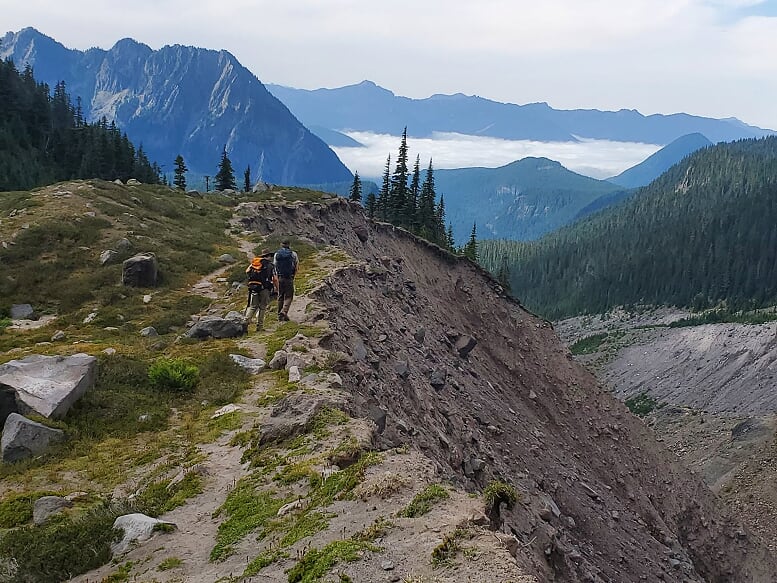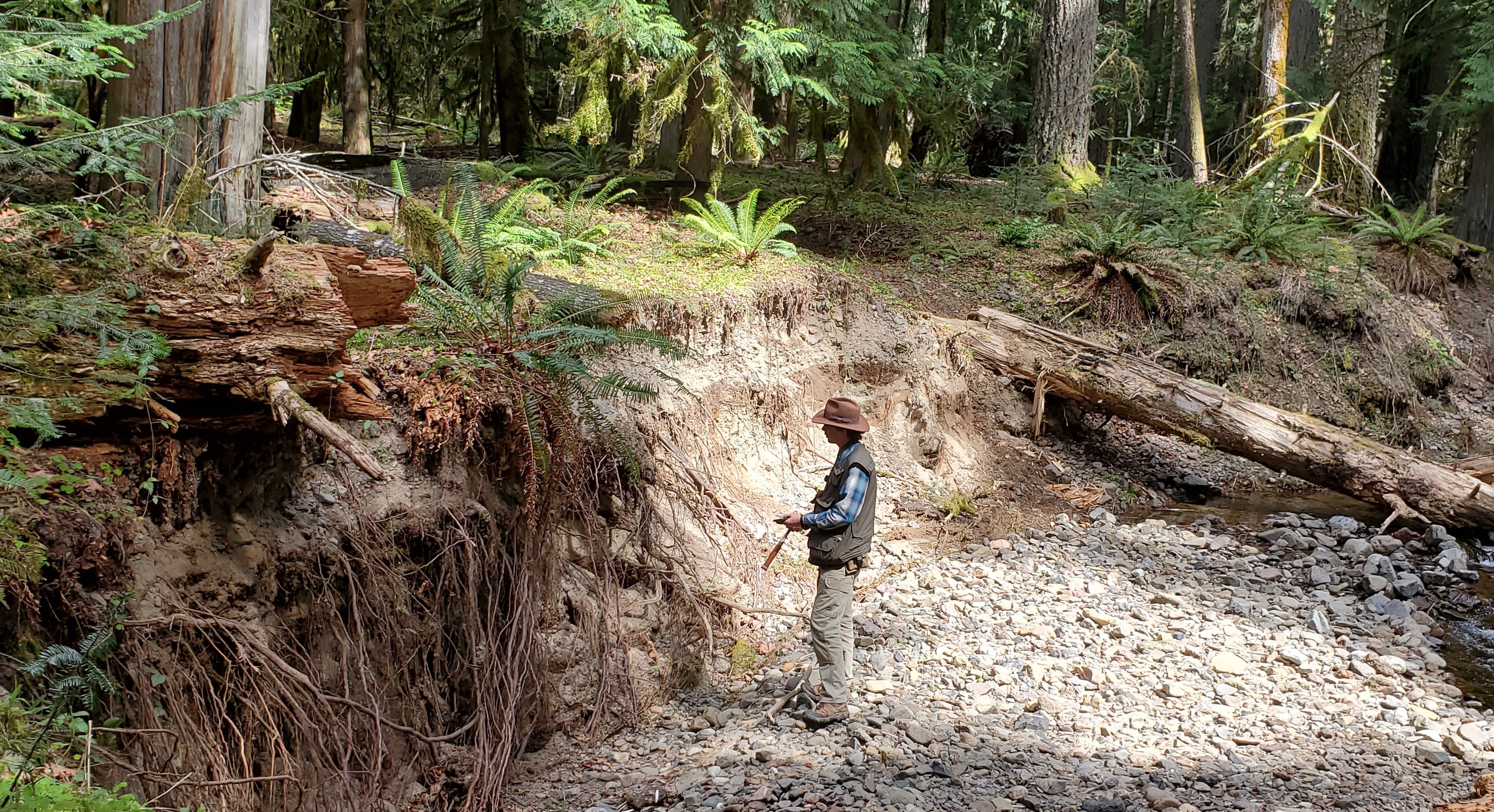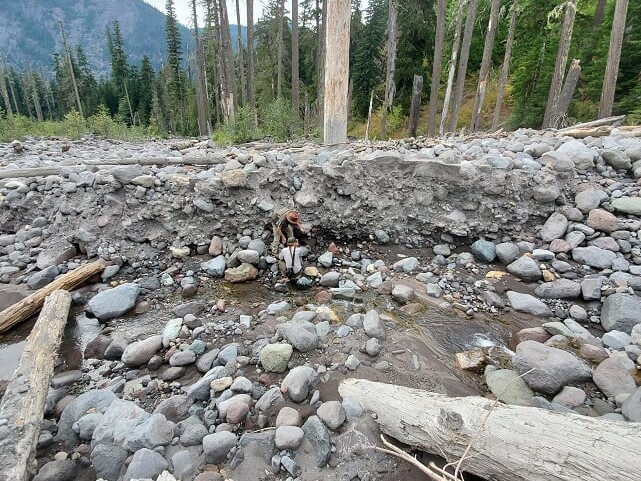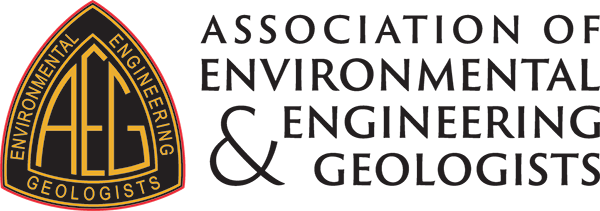
The Adventure
While those early morning classes for your degree may not sound too enticing, few things may slake one’s curiosity as much as fieldwork. Through direct observation, fieldwork enables the geologist to grapple with the chaotic mess about us we call the world and attempt to distill it into underlying foundational concepts. Through this process, one must be willing to climb over hill and dale as the urge for discovery drives onward, turning over rocks no one has ever seen before to ponder its clues. Even so, fieldwork must invariably lead to returning to a lab for the inglorious work of systematic measurements ever repeated for accuracy. Thus, it is not merely the adrenaline rush which keeps the geologist at work. Here too, however, is the mystery of discovery, for through meticulous measurement one may draw forth the geologic story like a skillful detective. By these means one may better acquaint oneself with nature’s many mysteries.
The More the Merrier!
Our world is an interconnected system – no one part would ever be complete without the others. Like a complex machine, our world runs by a variety of processes in a plenitude of systems, with any minor change in one affecting those of another. As such, the very nature of geology drives its students to consider this big picture. How could anyone appreciate a fine painting if all but one color could be seen? In like manner, how could one ever attempt to understand our Earth without first examining its many interconnected parts?
Physics may be the foundation for the sciences and mathematics its language, but all fields must pay their respects to geology in one’s quest to better understand the Earth system. Based on the knowledge in various domains, geology applies a host of unique tools to describe our world. This can be as general as a particular problem-solving strategy in mechanics to something as varied as applying structural geology, stratigraphy, and dendrochronology to evaluate the risk in a landscape prone to slope failures. In geology, there can never be too many datasets.

Unveiling a Story
Each landscape has a unique history, one which is built upon process over time. To understand why one landscape is characterized by its own unique set of conditions, one must first understand the history of its formation, yet that history cannot be complete without understanding each stage of that landscape’s lifetime. With its unique outlook on time, geology must tease from the rocks what they record about the processes that formed them.
The Present Provides Clues about the Past
To unveil the history of a landscape, one must first have a common reference frame. Consider why people from different cultures can so easily be offended by each other: without a common reference frame, major misunderstandings can result! In like manner, one can easily misunderstand a landscape’s past if one does not have a common frame of reference. This frame of reference is provided by studying the results of modern events and comparing them to the results of events we have not observed, but one need not find an identical landscape for comparison. For instance, a modern-day volcanic mudflow can provide clues for better understanding the deposits of a Mesozoic flash flood because the processes are similar. As such, understanding our present world can illuminate our understanding of Earth’s past.
The Past Provides Warning for Our Future
In like manner, the history etched into the rocks and landforms of an area can warn of future disasters. Because a landscape is the result of specific processes during certain events, it may be expected that some events may strike again in the future. For instance, the formative processes of volcanism in the past may, though quiet today, yet stir again in the future to continue its ancient tradition. Conversely, the very same processes of volcanism, even long after such activity has ceased, may create unstable conditions leading to future hazards. The very forces that have shaped a landscape in the past have major repercussions on the forces that will continue to shape – and disturb – the landscape enjoyed today. Such warnings can only be gleaned by taking note of the history recorded in the landscape.

Conclusions
With its rich variety, geoscience taps into the vast expanse of nature’s enigmas. Through the exploration of Earth’s untold facets, the adventure of discovery beckons the curious mind towards unveiling the mysterious past. With present events to insight us and the past to warn us, there are unimaginable stories to be discovered. What part will you play in that story?
Author Biography
Writing from western Washington, Isaac Pope is a sophomore undergraduate fascinated by geoscience, sharing his passion through outdoor geoscience education and publishing his research. Isaac co-chairs AEG’s Communications Committee and is the Book Review Editor of Environmental & Engineering Geoscience.
